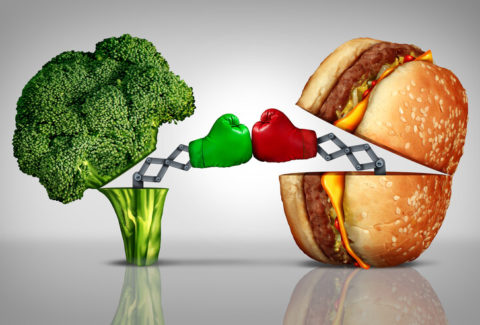Symptom Contextualization: 3 Additional Reasons Why
“I used to just equate hearing voices with schizophrenia,” said Clara, a clinician employed at the Hope Center. “Now, I know how naive of me that was. I walked in the room expecting it to be schizophrenia related psychosis, not realizing that it could have been a physical health or another mental health issue. I feel embarrassed and wonder how often I have misdiagnosed clients who have been under my care,” Clara added.
We have been introduced to Clara before, in a previous article on symptom contextualization, entitled, Symptom Contextualization: 2 Reasons Why. The two reasons I outlined were
- Accurate and reliable diagnosis, and
- Effective and efficient treatment.
In this current article, I will describe three additional reasons why it is necessary for us to practice and master the skills of symptom contextualization.
Recovery and level of functioning
Full recovery is a concept that some doubt and make fun of, choosing not to believe, while others use the term without really grasping its full meaning. Still, others do their best but with no process or thinking around it. Recovery essentially means people have a chronic condition that does not define them, and there is more to them than simply their chronic condition, be it schizophrenia, chronic pain, substance use disorder, or lupus. Also, it means people can and should be able to live, love, play, and work, despite a diagnosis. Nonetheless, for recovery to take place we need to see our patients and clients from a bio-psycho-social and cultural approach.
We need to remember that the social determinants of health are responsible for ninety percent of our health and recovery, and that cultural and subcultural nuances, our environment, our childhood experiences, and ongoing stressors, all shape who we are, how we express symptoms, and yes, the context of our symptoms. As a result, until we master the skills to contextualize the signs and symptoms of our patients and clients, the goal of recovery will be rather elusive.
Clear roadmap
Regardless of what we do in healthcare, having a rationale and a thinking behind it and an approach around it will
- help us remain on track,
- protect us from feeling overwhelmed,
- help empower us, and
- allow us to have a meaningful conversation with our patients and clients, with our colleagues, and with outside parties, including managed care and the court.
The opposite is also true, practicing reflexive diagnosing without thinking, treating without a rationale, and communicating with or responding to patients and clients without a supporting principle behind it, will sooner or later catch up with us. I tell clinicians to always be ready to explain what they are doing, why they are doing it, and to be sure they are comfortable with decisions they make. While this may all sound daunting, having a roadmap will help simplify it all, and it all starts with the principle of contextualizing symptoms for our patients and clients.
Ability to problem solve
The ability to problem solve is related to having an accurate and reliable diagnosis. It also relates to having a clear roadmap, which will then allow you to provide effective and efficient treatment, leading to recovery. If you have read enough of my articles, or have watched and listened to SWEET videos or have been to at least one of our SWEET seminars, then you know how much emphasis is placed on problem solving.
Often enough we come up with a solution that ends up creating more problems than when we started. Unfortunately, these devastating results may fail to be apparent right away. This, in turn, makes it easy to blame the worsening of the problem on something or someone else, or it makes it difficult for us to stop and think about what exactly may be going on. After all, the principle of root cause analysis is also often foreign to those who practice solving problems, without following a process in problem solving. Some of the initial steps of problem solving entail identifying the problem, agreeing on the exact nature of the problem, and proceeding with a root cause analysis, before even starting to brainstorm on possible solutions.
Does this sound foreign enough in your workplace and in how you practice? You are not alone. But it does not have to be that way. Like Mahatma Gandhi said, “Be the change that you wish to see in the world,” and this can start in how we work with our patients and clients, and yes, this can start with putting the symptoms of our patients and clients into context.
“I used to just equate hearing voices with schizophrenia,” said Clara, a clinician employed at the Hope Center. “Now, I know how naive of me that was. I walked in the room expecting it to be schizophrenia related psychosis, not realizing that it could have been a physical health or another mental health issue. I feel embarrassed and wonder how often I have misdiagnosed clients who have been under my care,” Clara added.
In summary, above are three additional reasons why it is necessary for all of us to practice and master the skills of symptom contextualization,
- To promote recovery and level of functioning;
- To have a clear roadmap; and
- To promote and enhance the ability to problem solve.
“If a man is called to be a street sweeper, he should sweep streets, even as Michelangelo painted, or Beethoven composed music or Shakespeare wrote poetry. He should sweep streets so well that the hosts of heaven and earth will pause to say, “Here lived a great street sweeper who did his job well,” said Martin Luther King, Jr., a man, who practiced what he preached. He was a man who, too soon, left this world, but whose legacy has made humankind much better than before his time. You, too, can make a difference in the world, big or small. And even a small start working with your patients and clients can have a significant, big impact.
References:
- Jacobson, Nora; Greenley, Dianne (2001). “What Is Recovery? A Conceptual Model and Explication”. Psychiatric Services. American Psychiatric Publishing. 52(4): 482–485.
- Carlos Pratt, Kenneth J. Gill, Nora M. Barrett, Kevin K. Hull, Melissa M. Roberts (2002) Psychiatric Rehabilitation.
- Anthony, W.A., Cohen, M., Farkas, M, & Gagne, C. (2002). Psychiatric Rehabilitation. 2nd edition. Boston: Boston University Center for Psychiatric Rehabilitation.
- Ahern L, Fisher D. Personal Assistance in Community Existence: A Recovery Guide. Lawrence, Mass: National Empowerment Center; 1999.
- Hern L, Fisher D. PACE/Recovery Curriculum. Lawrence, Mass: National Empowerment Center; 2001.
- Fisher D, Chamberlin J. PACE/Recovery Peer Training Recovery Curriculum. Lawrence, Mass: National Empowerment Center; 2004.
- What is a problem? in S. Ian Robertson, Problem solving, Psychology Press, 2001.
- Mayer, R. E. (1992). Thinking, problem solving, cognition. Second edition. New York: W. H. Freeman and Company.
- Newell, A., & Simon, H. A. (1972). Human problem solving. Englewood Cliffs, NJ: Prentice-Hall.
- Firend, Al R. (2014) The Problem Solving Model “PSM”, The International Journal of Business and Management Research. Vol.7, No.1.
- Wang, Y., & Chiew, V. (2010). On the cognitive process of human problem solving. Cognitive Systems Research, 11(1), 81-92.
- Nickerson, R. S. (1998). “Confirmation bias: A ubiquitous phenomenon in many guises”. Review of General Psychology. 2 (2): 176.
- Wason, P. C. (1960). “On the failure to eliminate hypotheses in a conceptual task”. Quarterly Journal of Experimental Psychology. 12: 129–140.
- Luchins, A. S. (1942). Mechanization in problem solving: The effect of Einstellung. Psychological Monographs, 54 (Whole No. 248).
- Walinga, Jennifer (2010). “From walls to windows: Using barriers as pathways to insightful solutions”. The Journal of Creative Behavior. 44: 143–167.
- Walinga, Jennifer, Cunningham, J. Barton, & MacGregor, James N. (2011). Training insight problem solving through focus on barriers and assumptions. The Journal of Creative Behavior.
- Stefanovitch, Nicolas; Alshamsi, Aamena; Cebrian, Manuel; Rahwan, Iyad (30 September 2014). “Error and attack tolerance of collective problem solving: The DARPA Shredder Challenge”. EPJ Data Science. 3 (1).









